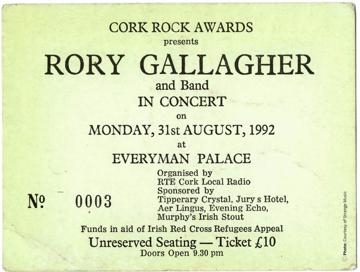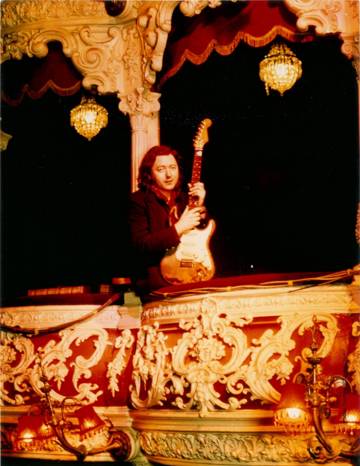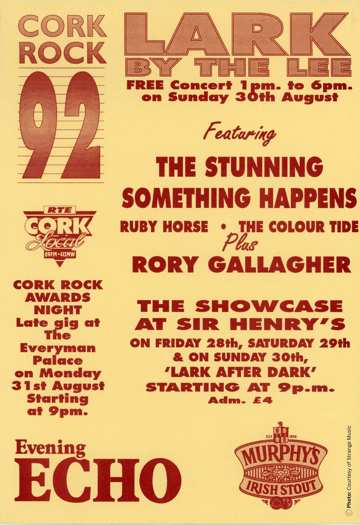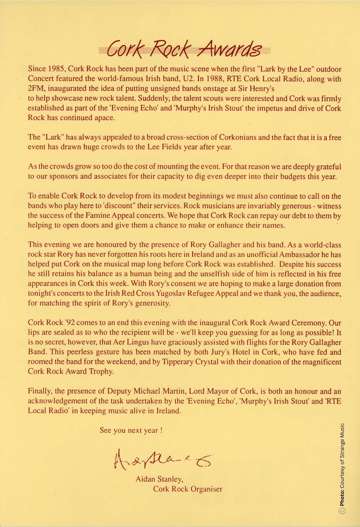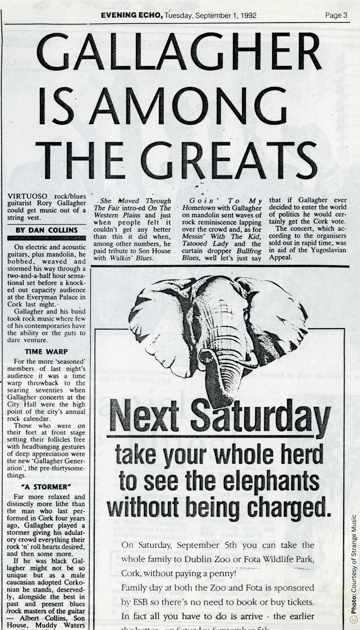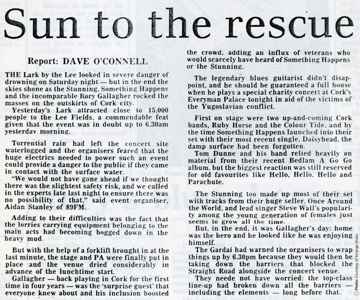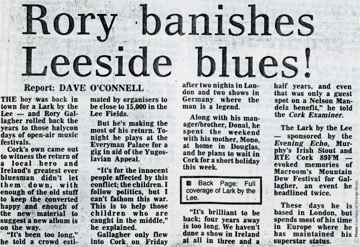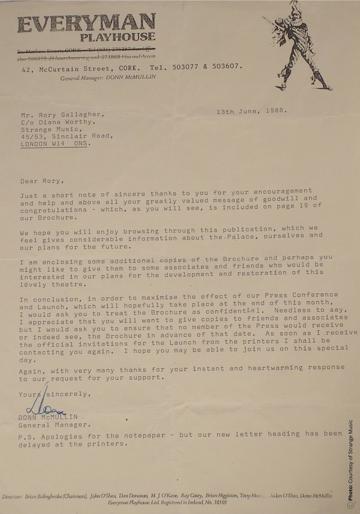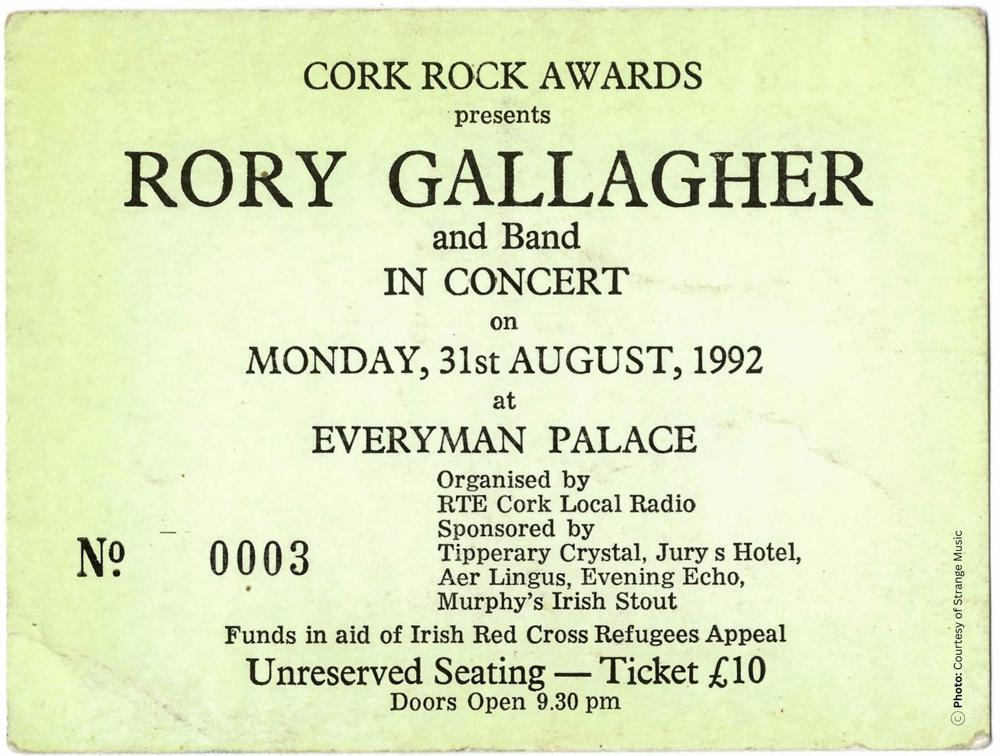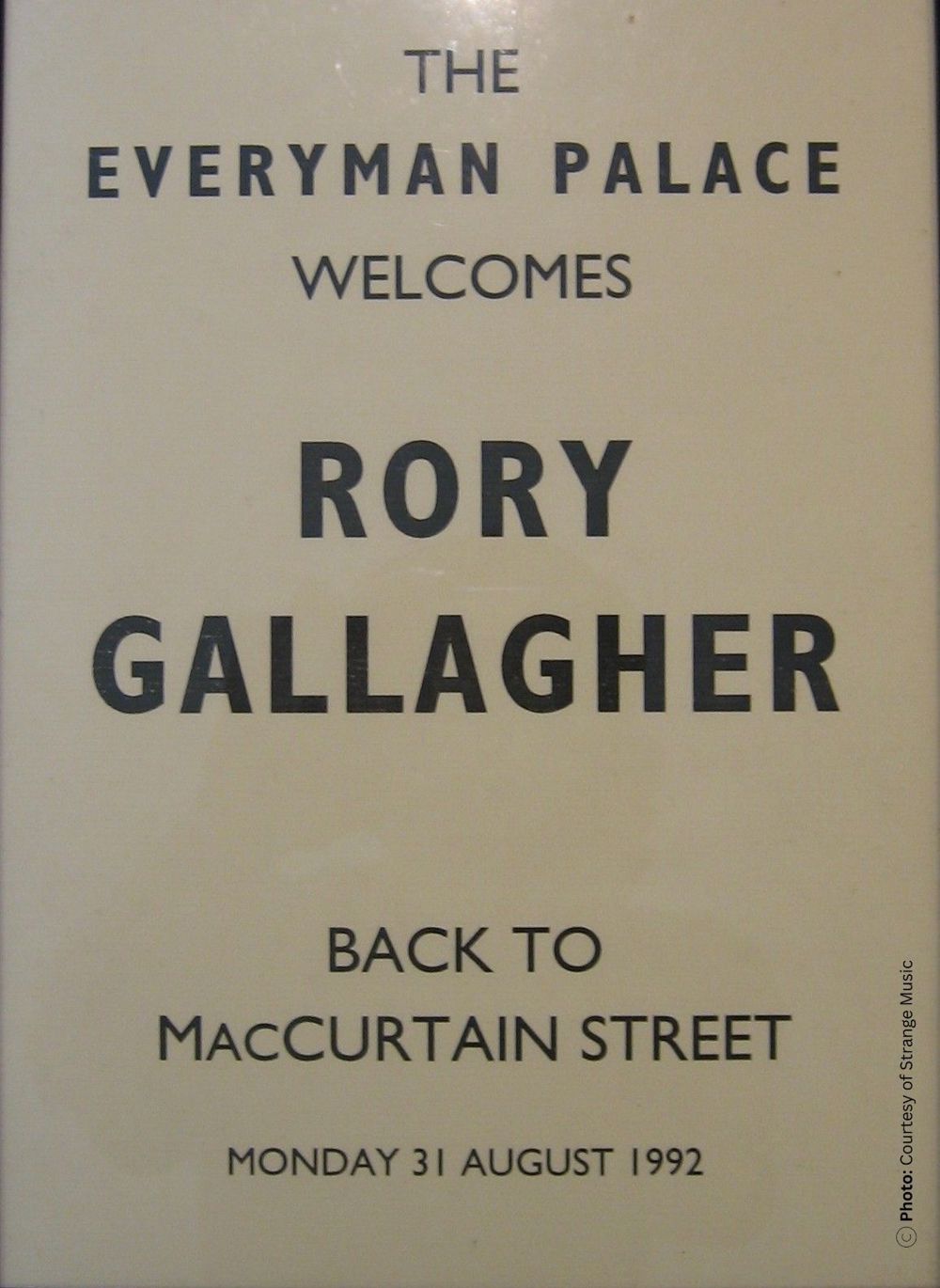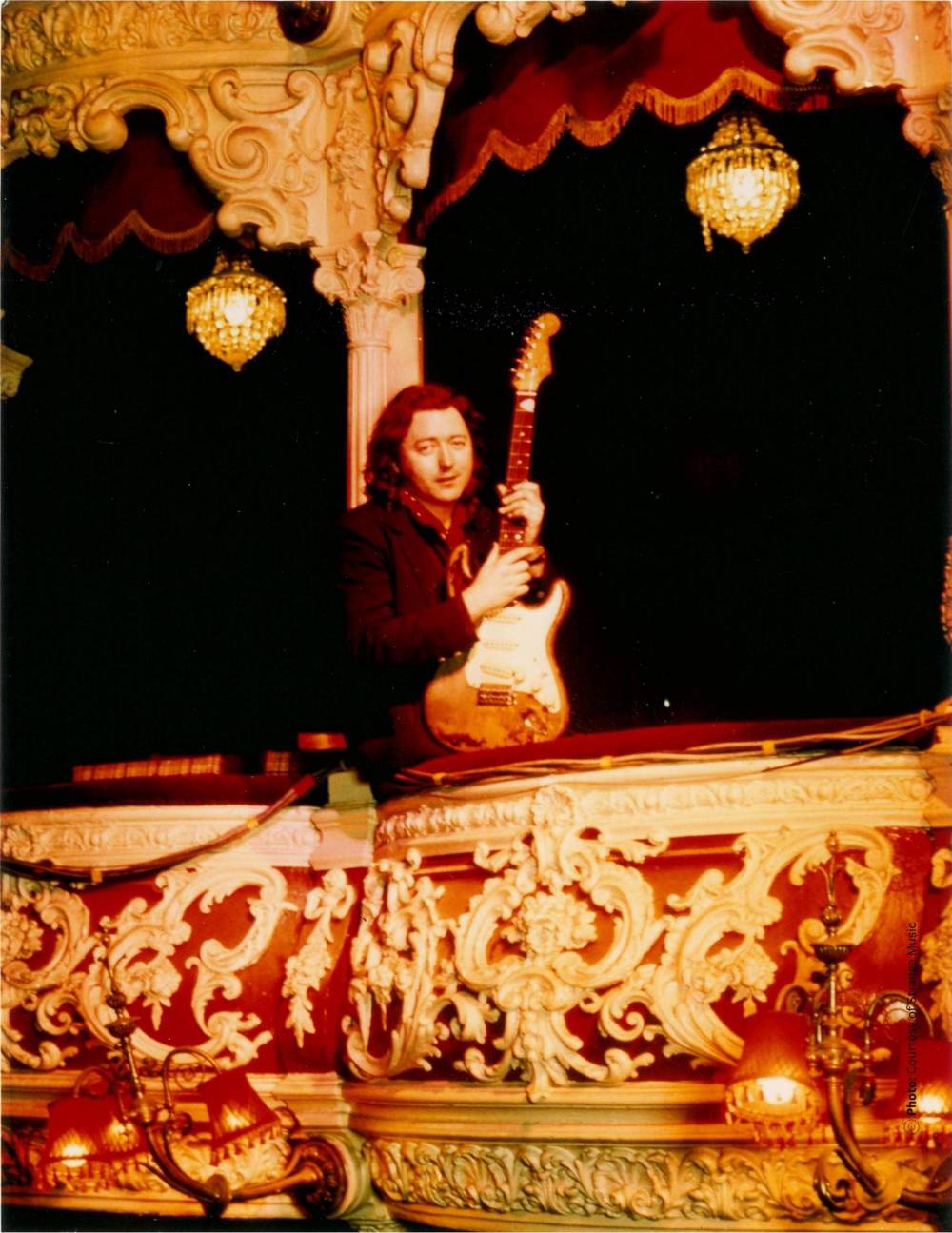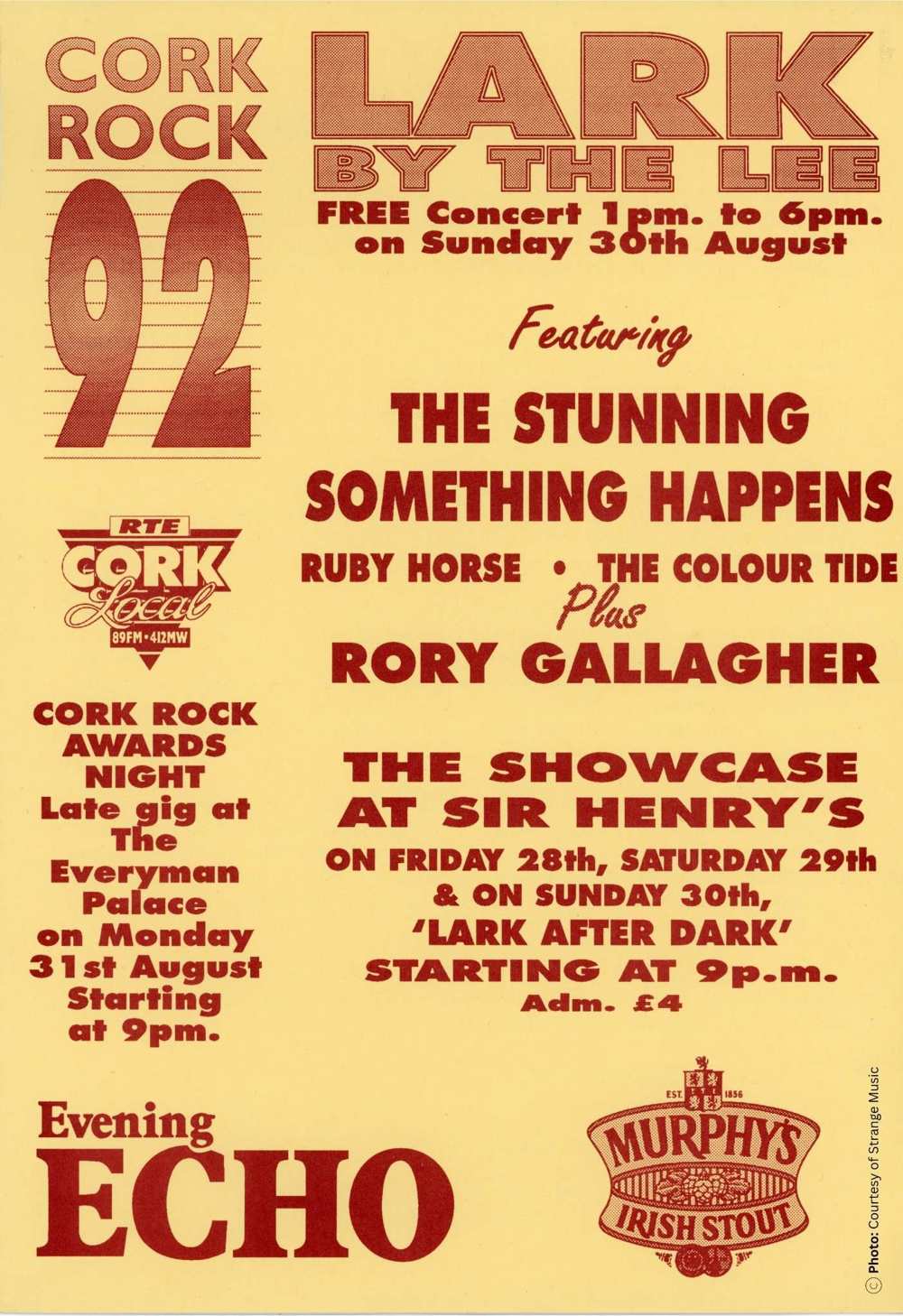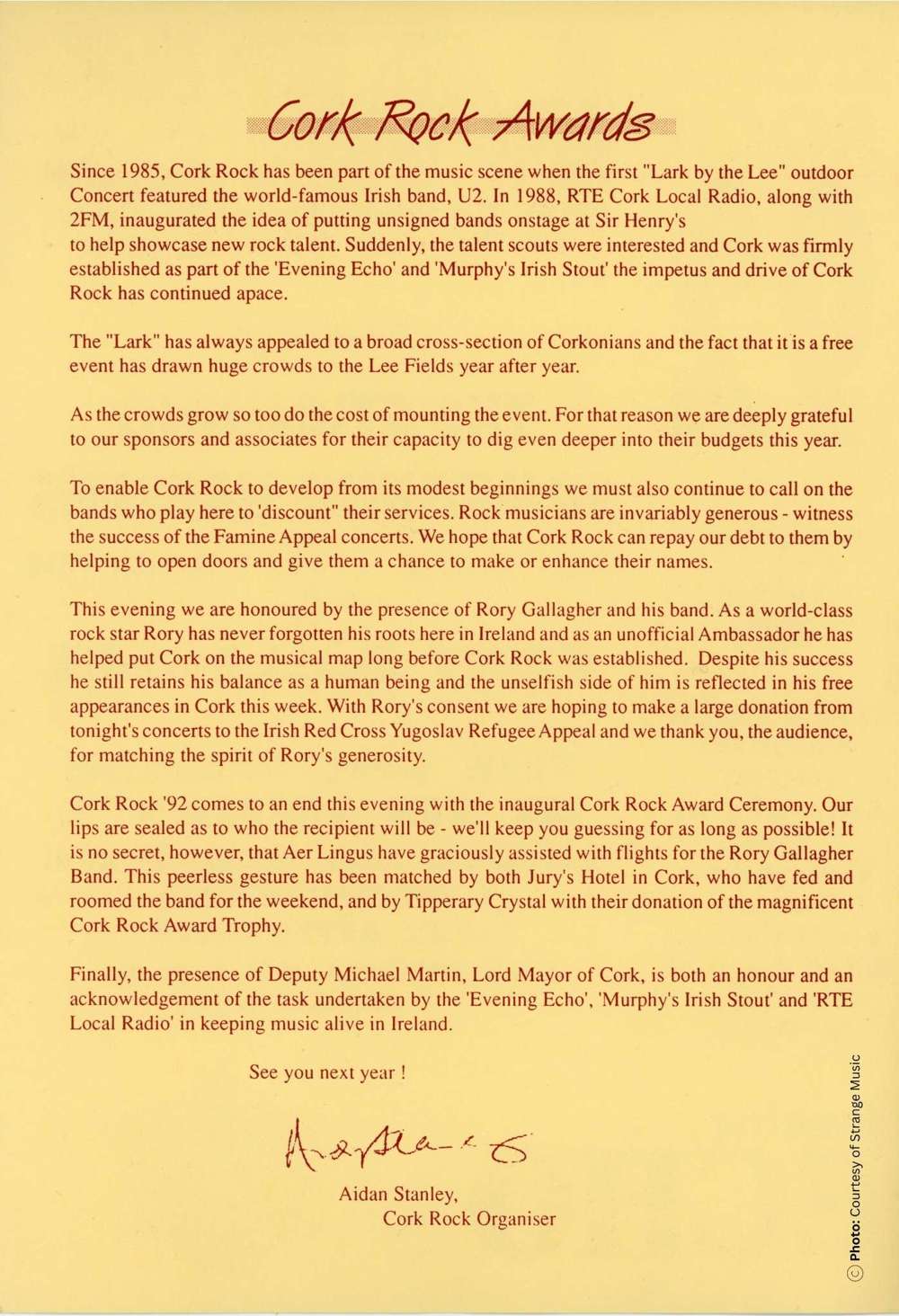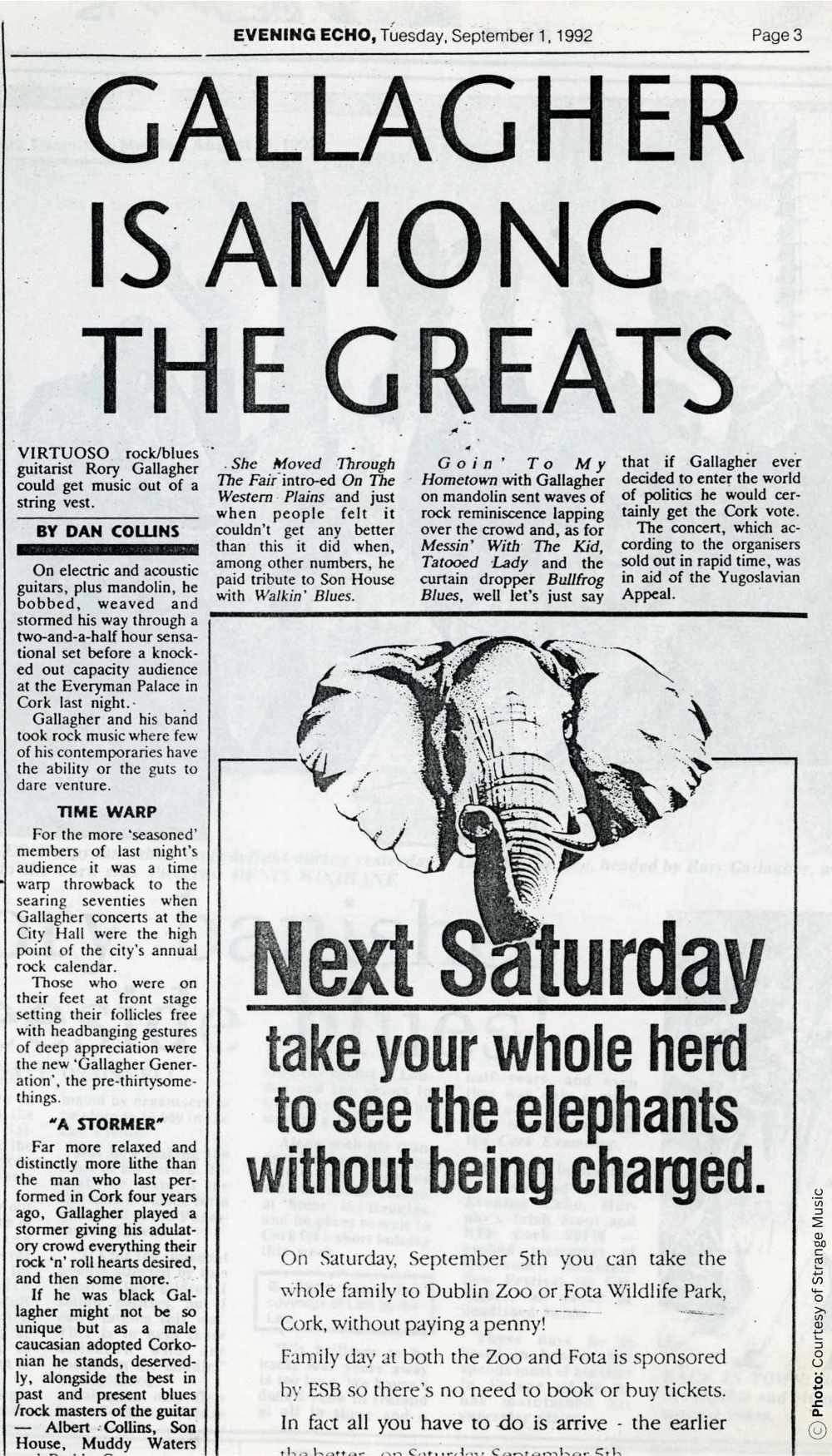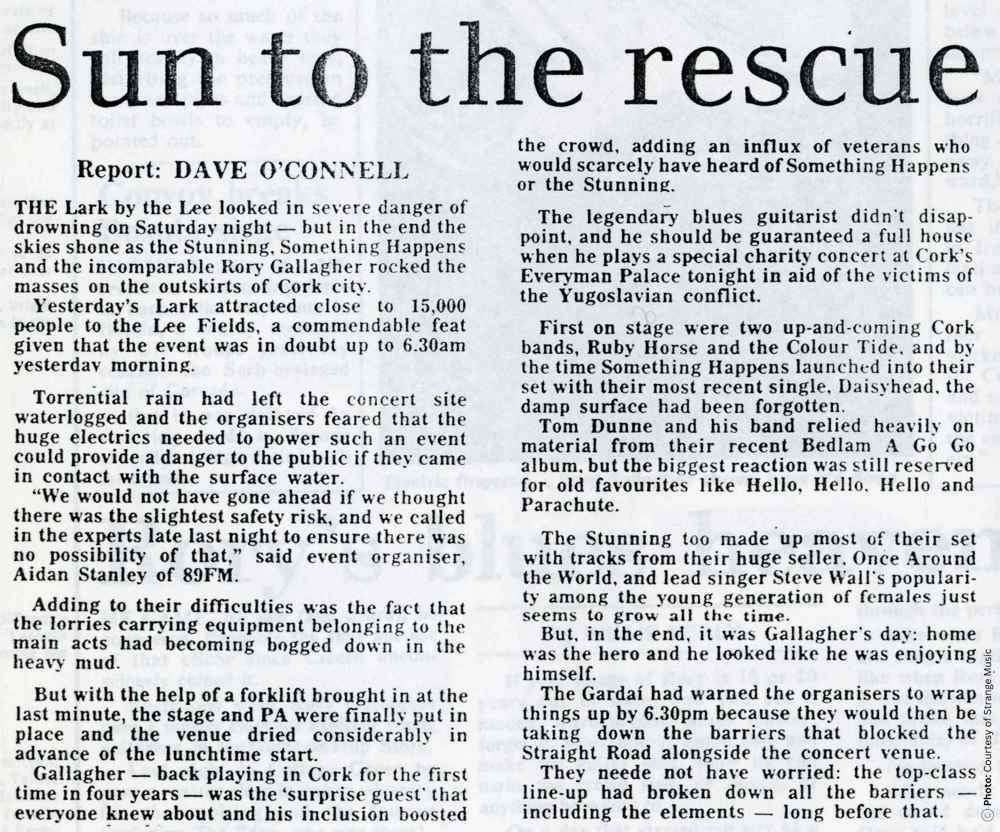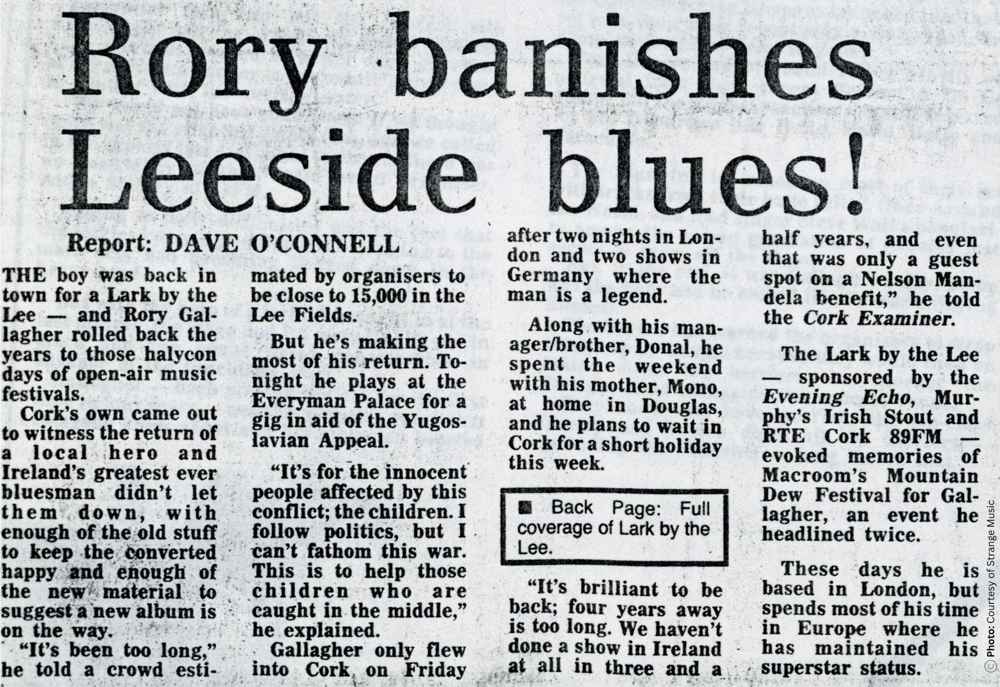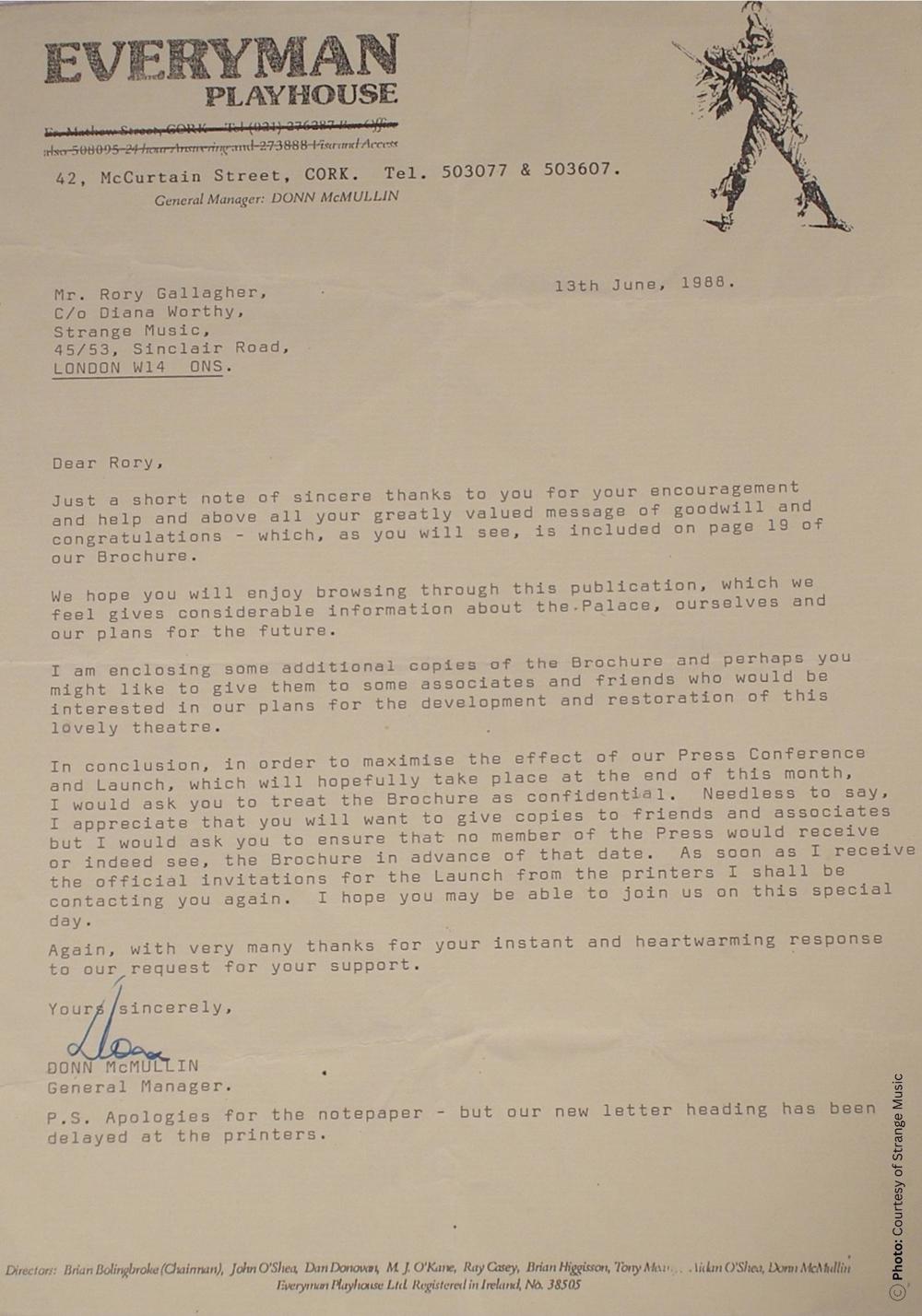Mac Curtain Street Area
The Everyman

On Monday the 19th of April 1897, Dan Lowrey opened the doors of the Cork Palace of Varieties, extending his ownership upon theatres he had established in Belfast and Dublin.
Performers on that opening night included an Australian ventriloquist bringing their dolls to life with Corkonian characters and chorus girls who concluded the show with rousing cheers and song.
Variety programmes were initially the most popular entertainment of the day. Soon, variety acts were followed by pantomime, opera and drama, with touring repertory companies visiting weekly from the UK and further afield.
Artists who performed at the Cork Palace of Varieties in this period include Charlie Chaplin, George Formby, Sandow the Strong Man, Stan Laurel and Oliver Hardy and more.
The Palace became a cinema in the 1930s. The Palace Cinema – ‘The House with the Perfect Sound’ and served as one of the city’s major cinemas for almost 50 years. The Palace closed as a cinema on 4th June 1988.
People passionate about the building engaged and were encouraged & supported by people like Rory- See letter pictured in 1988, and their hard work led to it reopening in 1990, to become a working theatre again when Everyman Theatre Company re-launching it as the Everyman Palace Theatre.
Rory Gallagher played to a sell-out audience at the Everyman on Monday the 31st of August 1992. It was organised to raise money for the Irish Red Cross Yugoslav Refugee Appeal.
In an interview with the Evening Echo a few days before the concert, Rory spoke about his deep emotional connection to the cause. He recalled his 1985 tour of Yugoslavia, which left him with lasting memories, and expressed that, “in his heart,” he felt compelled to help. “I follow politics, but I can’t fathom this war. This is to help those children who are caught in the middle,” he later shared with the Cork Examiner.
This wide-ranging performance saw Rory play for over three hours, taking place only the day after Rory had played at the Lark by the Lee Festival, a series of concerts out in Cork City’s Lee Fields and were a backbone of musical life in Cork from the mid-1980s.
Tom Dunne, the notable Irish broadcaster, recalled of a time when his band ‘Something Happens’ were making their own waves,
‘We also played a few Lark by the Lee events, one most notably with Rory Gallagher. To stand side stage while he played was one of the greatest ‘Take me now, Lord’ moments of my life.’
For more information on the Everyman’s rich past, thriving present and exciting future check out: https://everymancork.com/
27 MacCurtain Street (Former Home of Rory Gallagher)

Following his birth in Ballyshannon, County Donegal at the aptly named Rock Hospital to Monica Gallagher on March 2nd, 1948. His Father, Danny Gallagher (A talented accordion player himself) was employed constructing a hydroelectric power plant on the nearby Erne river.
After the family moved to Derry where Rory’s brother Donal was born in 1949. Before the family and Rory first started to stay at this family address as he was just turning 3. Intermittent moves followed for the young family between Cork & Coventry, England in the pursuit of work but by 1958 returned and were settled in Cork living above the former Modern, later Roche’s Bar run by Rory's grandmother, mother of Monica, Mrs ‘Mom’ Roche at this site.
It is interesting to note that many of the licensees of these premises were women throughout its history from 1901. A very early listing of 27 MacCurtain Street in 1852 has it as a private residence, then a shop in 1867 prior to it becoming a Public House in 1900 where it was listed as a Murphy’s brewery tied house run by Bridget Sheehan. This meant that only Murphy Brewery products such as Murphy’s Porter and Murphy’s Extra Stout could only be sold on the premises.
This continued when the Roche Family took over the premises in the early 1940s, first called the Modern and later Roche's Bar. The bar’s customers came from all walks of life, from famous musicians such as Seán Ó Riada to military men and the dockers who unloaded the ships in Cork’s busy harbour.
In addition to the bar’s regulars, the Modern Bar hosted family gatherings for people who were emigrating. The wake-like atmosphere, tears shed and drink devoured at these events would be enough to inspire any blues singer! The emigration out of Ireland at that time was very serious and most of the people who left went on a ship called the Innisfallen, which sailed between Cork and Fishguard in Wales that carried more people out of Cork than ever came back. It usually sailed about six at night, so the families of whoever was leaving would gather to say farewell here.
MacCurtain street and the adjacent Coburg Street were a key thoroughfare around this time with places like the Creedon family’s Inchigeela Dairy and the O’Brien’s sandwich shop; the first of a national chain. US President John F Kennedy rode down the street in his motorcade during an Irish tour of his own while Rory was living there in 1963.
Cork City itself was a bustling place built in recent decades where Henry Ford decided to set up his first car plant outside the US in Cork in 1917, in honour of his Cork grandfather, and this soon led to a Dunlop’s tyre factory being set up next door as well. The Corkmen employed at the Ford plant quickly became skilled at car-making and their talent as teachers and foremen was exported to Ford‘s new factory at Dagenham, in the East of London. The men who went over to train workers at the London factory were well paid for their trouble. Unlike many who left on the Innisfallen, they had enough money to return – so much so that they were dubbed ‘The Dagenham Yanks’ when they came back to Cork in the summertime, because they’d splash their money around like high rollers. Ford’s contribution to life in Cork meant Rory always had a particular affection for their cars, inspiring the song Souped Up Ford on his 1975 album Against The Grain.
Despite an early flirtation with the piano, Rory’s heart was always set on playing guitar. From his first ukulele aged 9 and soon after an acoustic, he disappeared into another world from playing football with friends, emerging from his guitar-obsessed seclusion only for meals and school.
The study of his craft soon progressed from Volume One of a basic chord-book to Volume Three, which featured diminished chords, flattened ninths and other ‘jazz’ shapes. This broadened Rory’s understanding and enabled the start of his career that this place on MacCurtain Street was the base from where he grew into a young performer in Cork, through his time in the Fontana Showband, Impact and then the first incarnation of Taste.
It was to note then in 1967 that Rory left the family home and the city of his childhood to go fully professional in his vocation, drawn to the thriving scene in Belfast to sample further where Taste had been well received.
- Introduction to Rory Gallagher's Stompin' Ground Cork City Walking Trail
- Interactive Walking Trail Map
- Mac Curtain Street Area
- Coburg Street and Leitrim Street
- St Kieran's College, Camden Quay
- Site of Crowley's Music Centre, Merchant's Quay
- Cork City Hall, Anglesea Street
- Imperial Hotel, South Mall
- Site of Palm Court Ballroom
- Long Valley Bar, Winthrop Street
- The Savoy, St Patrick's Street
- Emmet Place
- Rory Gallagher Place
- St Francis Hall, 20 Sheares Street
- Cork Public Museum, Fitzgerald's Park
- St Augustine's Hall, Washington Street
- The Capitol Building, Grand Parade (formerly Capitol Cinema)
- Cork City Library, Grand Parade
- Former Arcadia Ballroom, Arcadia Apts, Lower Glanmire Road
- Rory Gallagher Avenue, Cork Airport
- Rory Gallagher Theatre, MTU Bishopstown
- Church of the Holy Spirit, Dennehy's Cross
- Saint Oliver's Cemetery, Carrigrohane

